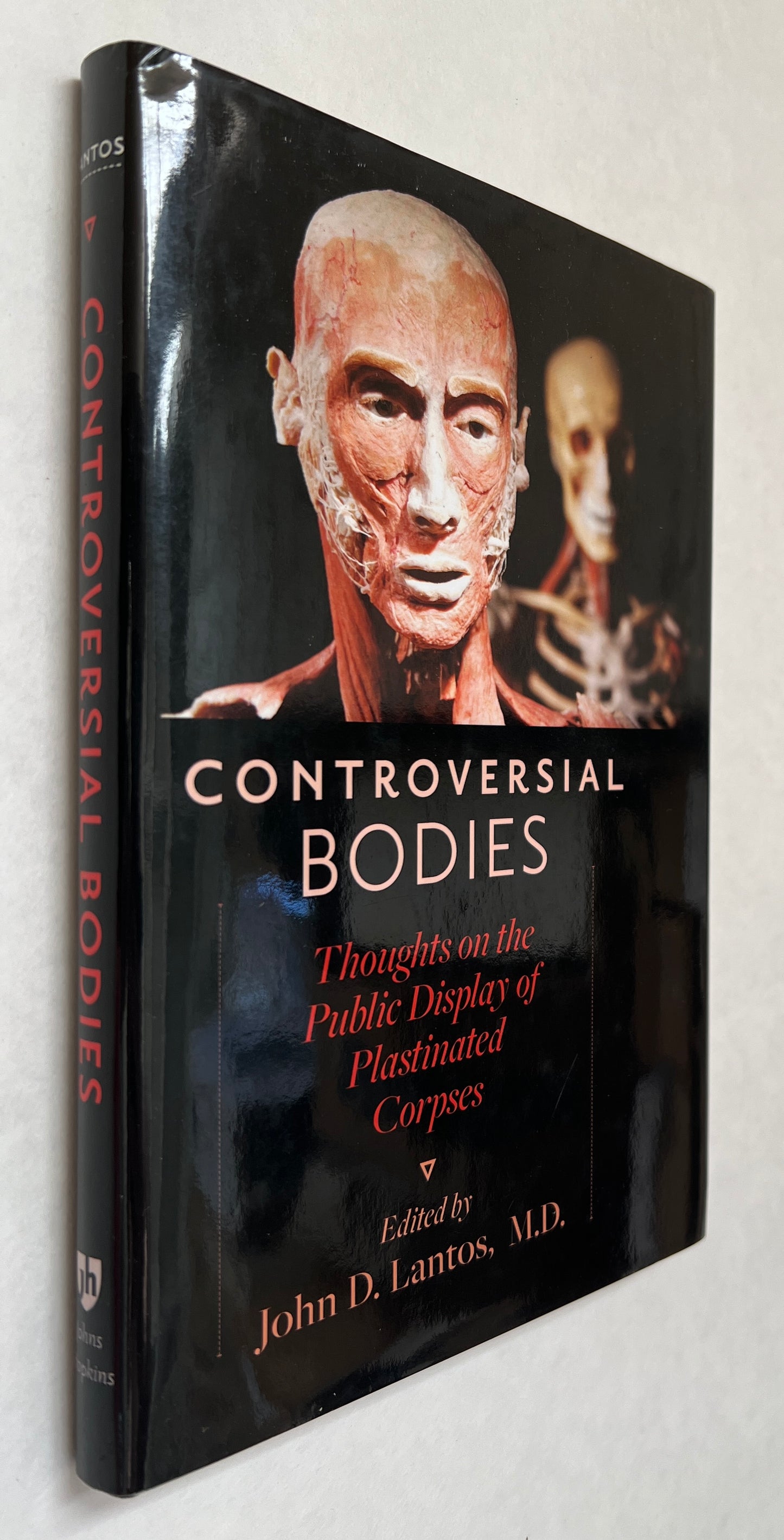Lantos, John D.
Controversial Bodies: Thoughts On the Public Display of Plastinated Corpses
Controversial Bodies: Thoughts On the Public Display of Plastinated Corpses
Couldn't load pickup availability
Baltimore: Johns Hopkins University Press, 2011. First printing (full number line). x, 145 pages; 23 cm; bibliographical references (pages 129-139) and index. Very fine in very fine jacket; as new. Hardcover. ISBN: 9781421402710
Contents: Introduction: plastination in historical perspective / John D. Lantos -- Being non-biodegradable: the lonely fate of metameat / Catherine Belling -- Lifelike humans: playing poker with James Bond and Ted Williams / George J. Annas -- More wondrous and more worthy to behold: the future of public anatomy / Geoffrey Rees -- Resisting the allure of the lifelike dead / Christine Montross -- Detachment has consequences: a note of caution from medical students' experiences of cadaver dissection / Farr A. Curlin -- The history and potential of public anatomy / Callum F. Ross -- What would Dr. William Hunter (1718-83) think about Bodies Revealed? / Lynda Payne -- Vive la difference: Gunther von Hagens and his maligned copycats / Linda Shulte-Sasse -- Normative objections to posing plastinated bodies: an ethics of bodily repose / Tarris Rosell -- For Ronnie and Donnie / Myra Christopher -- The creeping illusionizing of identity from neurobiology to newgenics / Barbara Maria S Stafford -- Craft and narrative in body worlds: an aesthetic consideration / Neil Ward -- Afterword: plastination's share of mind / Neil A. Ward and John D. Lantos.
Controversial, fascinating, disturbing, and often beautiful, plastinated human bodies -- such as those found at Body Worlds exhibitions throughout the world -- have gripped the public's imagination. These displays have been lauded as educational, sparked protests, and drawn millions of visitors. This book looks at the powerful sway these corpses hold over their living audiences everywhere. Plastination was invented in the 1970s by German anatomist Gunther von Hagens. The process transforms living tissues into moldable plastic that can then be hardened into a permanent shape. Von Hagens first exhibited his expertly dissected, artfully posed plastinated bodies in Japan in 1995. Since then, his shows have continuously attracted so many paying customers that they have inspired imitators, brought accusations of unethical or even illegal behavior, and ignited vigorous debates among scientists, educators, religious leaders, and law enforcement officials. These lively, thought-provoking, and sometimes personal essays reflect on such public displays from ethical, legal, cultural, religious, pedagogical, and aesthetic perspectives. They examine what lies behind the exhibitions' popularity and explore the ramifications of turning corpses into a spectacle of amusement. Contributions from bioethicists, historians, physicians, anatomists, theologians, and novelists dig deeply into issues that compel, upset, and unsettle us all
Human anatomy. Bioethics. Dead. Exhibitions. Cadaver Medicine in the Arts Bioethical Issues Exhibitions as Topic. Human Body Plastic Embedding Bioethics Tissus (Histologie) -- Inclusion dans le plastique. Anatomie humaine. Morts. Bioéthique. Expositions. exhibitions (events) Exhibitions. Dead. Bioethics. Human anatomy. Tissues -- Plastic embedment.
Share




